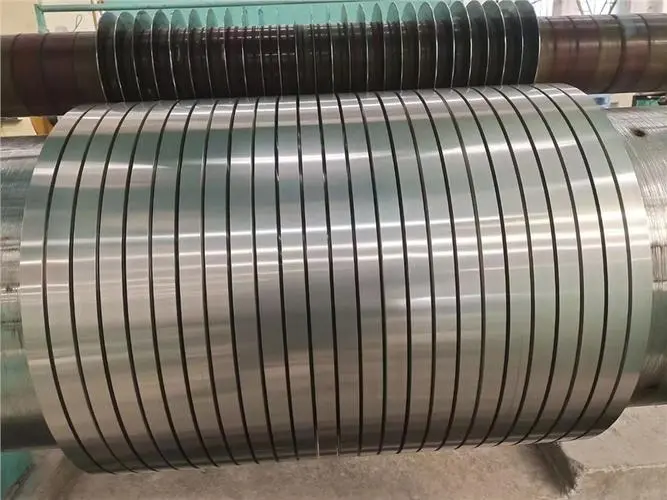
Stainless Steel Foil for Heat Treatment: Complete Application Guide
Heat treatment is a foundational process in modern metallurgy that determines the final strength and durability of metal components. When

Foil has multiple applications, ranging from the culinary industry to scientific and engineering contexts. This article will delve into five diverse perspectives on the question of who invented foil, an intriguing subject that demands a multi-faceted examination. These perspectives include the invention of aluminum foil, gold foil, foil used in fencing, foil as a printing method, and foil as a mathematical concept.
The invention of aluminum foil is attributed to the Swiss engineer Robert Victor Neher. He created a process to roll aluminum into thin sheets, and his invention revolutionized the packaging industry.
Foil’s usage in the food industry became widespread as it allowed for fresh preservation. It replaced tin foil, which left a metallic taste in food.
Nowadays, aluminum foil is a household staple. It has many uses, including cooking, wrapping, and insulating.
Recent discussions have raised concerns about foil’s environmental impact. The mining and production process consumes energy, leading to discussions about sustainability.
Before aluminum foil, tin foil was common. The transition to aluminum improved quality and taste protection.
The year 1910 marked the start of foil’s commercial production in Switzerland. Its popularity soon spread across Europe and the United States.
Foil’s cultural impact is profound. It shaped culinary practices, allowing for innovative cooking techniques.
Beyond cooking, foil has vital uses in the medical and scientific fields, such as shielding and insulation.
Technological advancements may lead to more sustainable production methods. The future of foil looks promising, with ongoing research focusing on reducing its environmental footprint.
The invention of aluminum foil by Robert Victor Neher was a significant milestone. It transformed various industries and continues to be a subject of interest and research.
Gold foil has been adorning art, furniture, and architecture for centuries. Its invention dates back to ancient civilizations.
The Egyptians and Romans were among the first to utilize gold foil. They developed methods to hammer gold into thin layers.
Gold foil symbolizes wealth, power, and prestige. It has been used to decorate religious artifacts and royal possessions.
Many famous artworks employ gold foil. Artists like Gustav Klimt were known for their unique use of this material.
From ancient temples to modern buildings, gold foil adds a touch of elegance. Examples include the Golden Temple in Kyoto.
Creating gold foil requires skill and precision. The process involves beating gold into thin sheets, often just a few microns thick.
Gold leaf is a type of gold foil, but even thinner. It’s used for more delicate applications.
Beyond aesthetics, gold foil has industrial applications. It’s utilized in electronics and space equipment.
Contemporary artists and designers continue to embrace gold foil. It’s a timeless element that adds luxury and flair.
Gold foil’s invention is rooted in ancient history. Its applications are diverse, ranging from art to industry, making it an enduring and fascinating material.
Fencing, the art of sword fighting, has evolved over the centuries. The invention of the foil, a type of fencing sword, marked a turning point in the sport’s history.
The foil is lightweight and flexible. It’s designed for thrusting, not cutting, making it ideal for training and competition.
The foil originated in the 17th century. It was used as a practice weapon for dueling.
Fencing includes three weapons: foil, épée, and sabre. Foil emphasizes technique and strategy.
Fencing with foil follows specific rules. Target areas and right-of-way rules make it a complex and engaging sport.
The foil has shaped modern fencing. It’s the choice for many competitive fencers and is used in the Olympics.
Foil is often the starting point for new fencers. It’s seen as an educational tool in the sport.
Modern technology has brought changes to foil fencing. Electronic scoring is now standard.
Foil fencing has cultural significance. It’s associated with honor, discipline, and skill.
The invention of the foil in fencing has had lasting effects on the sport. Its influence on training, competition, and culture continues to resonate.
Foil printing is a specialized method that uses heat, pressure, and metallic or pigment foil. It creates a luxurious finish on paper, leather, and other materials.
Foil printing has roots in ancient East Asia. It evolved with technological advancements, gaining popularity in the 19th century.
Today, foil printing is widely used for invitations, business cards, and packaging. It adds a premium touch.
Modern foil printing relies on machinery that controls heat and pressure. It ensures precision and quality.
Graphic designers use foil printing to create striking effects. It’s an artistic tool that elevates design.
Foil printing requires expertise. Factors like temperature, pressure, and foil quality must be carefully managed.
Sustainability in foil printing is a topic of interest. Eco-friendly foils and practices are emerging.
Compared to traditional printing, foil printing offers unique textures and effects. It’s chosen for its aesthetic appeal.
Foil printing is evolving with new technologies and materials. Its future looks bright, reflecting innovation and creativity.
Foil printing is an ancient technique that continues to enchant. Its invention has enriched the world of printing, offering endless possibilities for artistic expression.
FOIL is a mnemonic for the standard method of multiplying two binomials. It stands for First, Outer, Inner, Last.
The FOIL method’s origins are debated. It is a part of algebra, a branch of mathematics with ancient roots.
FOIL is taught in schools around the world. It’s a foundational concept in algebra.
The FOIL method simplifies the multiplication of binomials. It follows a specific sequence of multiplications.
FOIL has applications in various mathematical areas. It’s used in solving equations, factoring, and more.
There are other ways to multiply binomials, but FOIL is often preferred for its simplicity.
Calculators and software have automated many calculations, but understanding FOIL remains essential.
The FOIL method represents
an essential building block in algebra. It has shaped mathematical thinking and problem-solving.
The FOIL method continues to be a vital part of mathematics education. Its teaching and understanding are crucial for future generations.
The FOIL method in mathematics is an essential concept. Its invention and utilization play a vital role in the field, both in education and advanced mathematics.
The invention of foil extends far beyond a simple material. It encompasses a wide array of applications and disciplines, each with its unique history and significance. Whether it’s the ubiquitous aluminum foil in our kitchens, the elegance of gold foil in art, the skillful use of foil in fencing, the creativity in foil printing, or the mathematical concept of FOIL, this seemingly simple word represents a complex and fascinating tapestry of human innovation and expression.

Heat treatment is a foundational process in modern metallurgy that determines the final strength and durability of metal components. When

Stainless steel coils serve as the backbone for countless consumer products we use daily. These versatile metal sheets combine exceptional